Following the outbreak of the First World War, people on the homefront sought to aid the war effort in any way they could. This determination led to the creation of the South Australian Children’s Patriotic Fund, in 1915, designed to mobilise children at schools around the state, in support of the war effort through a variety of fundraising efforts. One of the major fundraising efforts undertaken during the First World War raised £5,350 for the South Australian Soldiers’ Repatriation Fund, coordinated by Ms Adelaide Miethke. At the end of the war the Children’s Patriotic Fund ceased operations, as their contribution was no longer necessary. In March 1940, the South Australian government decided to prepare for the war effort and reinstated the Children’s Patriotic Fund under a different name, the Schools’ Patriotic Fund, with Ms Adelaide Miethke appointed Director. The organisation sought once again to contribute to the war effort by combining the fundraising efforts of schools and students across the state. Despite enjoying widespread support the Schools’ Patriotic Fund attracted a range of critics who disapproved of their ‘influence’ over young children. By the end of the Second World War the Schools’ Patriotic Fund once again decided to cease operation as the efforts they had undertaken were no longer necessary. Both organisations played significant roles in supporting the war effort on the home front.
Beginnings of the Children’s Patriotic Fund
Following the outbreak of the First World War teachers across the state, acting as individuals, set out to raise funds for the war effort with the help of their students, donating to a range of organisations and institutions. This system of fundraising resulted in the unnecessary donation of goods to organisations that were not in dire need and left some charities running on a shoestring. Teachers from across the state approached the Director of Education, MM Maughan, seeking co-operation between schools in order to focus fundraising efforts towards larger goals through the establishment of a central committee. Consequently, in September 1915, following the Directors advice, the South Australian Children’s Patriotic Fund (SACPF) was formed and started receiving funding from across the state.
South Australian Children’s Patriotic Fund
The main aim of the Children’s Patriotic Fund (CPF) was to collectively raise funds and provide it to those that have the ‘most urgent need at the moment’. This fundraising ranged from selling badges and sweets, to collecting old tins and paper and also included producing ‘homely goods’ for soldiers by knitting socks and constructing Christmas Boxes. The district of Mount Schlank even formed a Children’s Tobacco League, which tasked students with raising 3d a month, or bringing a pack of cigarettes to send to Australian soldiers with other ‘comforts’. The CPF also aimed to instill patriotic pride in children hoping to encourage them to contribute more to the war effort through ‘patriotic self-denial’ and to ‘lighten the burden’ of returning soldiers who had helped defend Australia.
A report of the SACPF compiled by the Committee of the CPF and its secretary, Ms Adelaide Miethke, dedicated it ‘to those who, unable to take their place on the field of battle, stand firmly behind the lines ready to make any sacrifice that will bring greater strength to those who serve and suffer for King and Empire’. The Murray Bridge district placed a high importance on the elements of patriotic pride promoted by the CPF with their weekly fundraising efforts. Each grade had a collection box with the words ‘For King and Country’ written on the side, which was passed around the classroom following a salute of the flag and a rendition of the national anthem. The report compiled by Ms Miethke for the CPF stated ‘this gives a splendid opportunity for realising that something more than mere ‘lip service’ is required from the true patriot in such times as these’.
First World War
The Children’s Wonderland Fair that took place on 8 and 9 December, 1916 was the crowning fundraising effort undertaken by the CPF during the First World War, of which it was said ‘nothing of its kind has been equal to it in Adelaide’. The event was established to raise money for the South Australian Soldiers’ Repatriation Fund who were caring for more returning soldiers every day. The CPF decided to unite the fundraising efforts of all the schools in the state and hold a ‘Wonderland’ fair at the Exhibition Building in Adelaide, raising £5,350 for the fund. The event, organised by Ms Adelaide Miethke was a massive success and saw the Exhibition building transformed into a ‘wonderland’ with the children dressing up as characters from nursery rhymes and the building decorated from top to bottom with flowers and trees. Stalls selling a range of homely goods including, socks, cocoa, coffee, knitted goods, jams and sweets, were present with all proceeds going towards the Repatriation fund. This idea of unified strength persisted throughout the remainder of the war years with country schools coming together to form local community centres that helped returning local soldiers.
In addition to this sense of community the Children’s Patriotic Fund also promoted individual sacrifice and selflessness by awarding children who raised and donated 10 shillings with a war service medal. The medal was established to praise children, who by personal efforts, aided the war effort in any way they could and inspired other children to do the same. Merely collecting the medal was strongly discouraged and children were encouraged to wear the medal as a badge of honour around others. The outcome of this was ‘an eagerness to turn every possible resource to good account’ with one mother saying ‘in the midwinter holidays my daughter, Irene, gave up the whole of her holidays to earn 10/ for the Patriotic Fund’. For every additional 10/ donated children were awarded with an extra bar to their medal, with one child, Doreen Haggar of Orrorro district, earning six bars by August 1917.
Following the conclusion of the First World War the Children’s Patriotic Fund ceased its activities with its volunteers moving to assist other remaining charities or returning to normal life. This was not unusual as the huge number of homefront organisations established during the war were no longer necessary. However, this was not the end of the organisation, with the School’s Patriotic Fund being established to fulfil the same goals at the start of the Second World War.
Beginnings of the Schools’ Patriotic Fund
It was decided in March 1940 by the South Australian Education Department that in order to efficiently prepare for the war a Schools’ Patriotic Fund would have to be established to direct and control schools wartime efforts. The organisation was set up to utilise the same system of control where schools were separated into subdivisions, districts and local groups with fundraising to be focussed on a collective goal. This system proved to be effective during the First World War under the guidance of Ms Adelaide Miethke who resumed her role with the SPF.
The organisation had sought to change their name so that students would not only learn the value of service, ‘but also that hopes, fears and anxieties from within the home circle might find some outlet in constructive assistance towards victory’. The SPF didn’t solely focus on fundraising, it instead split its efforts between raising funds, performing tasks of public service, salvaging waste products, making hospital equipment, knitting for the forces, and aiding the war loan through the purchase of war bonds, which helped the Australian government finanace the war effort.
Second World War
Just as during the First World War schools across the state helped in any way they could no matter their location. By 1946 the SPF had raised over £400,000 for the war effort ($26,850,000 Australian in 2015). In the final report of the SPF compiled by Ms Adelaide Miethke detailing operations between January 1940 and January 1946 it is stated that South Australia was the only state which organised the grand effort of its children – from the outbreak of war until the final surrender – and organised it as a combined effort through its own fund. The report concludes with a message from the Governor of South Australia, Willoughby Norrie, ‘so this is now goodbye, and thank you, SPF-ers! May you serve your country in peace as nobly as you did in war… God bless you all’.
One of the more important fundraising efforts undertaken by the SPF during the Second World War was the collection of bones after Australia’s major phosphate supply was cut off when the Japanese captured the islands North of Australia. Phosphate is a very important ingredient in organic manure used to grow vegetables, with the resulting food helping to support service men and their allies. An Australian fertilizer company put out an appeal for bones, which wasn’t enthusiastically received by the general public, but the children had ‘neither squeams nor qualms as to bones’. A drought across the state had taken its toll and left bones scattered across the country, which gave country schools an opportunity to outperform city schools. By the time the appeal came to a close the SPF had collected 2,433 tonnes of bones and added over £10,000 to the fund.
Criticisms of the Schools’ Patriotic Fund
Not everyone agreed with the message the Schools’ Patriotic Fund was imposing on children. The organisation faced criticism from a range of pacifist groups, though these organisations were in the minority. One pacifist advocate, Leonora Polkinghorne, wrote a satirical Broadcast to schools in 1942 criticising the actions of the SPF and the actions of the Australian government. Leonora was a member of the Housewives’ Association and ran for Parliament in 1930, representing the League of Women Voters; working towards the end of conscription, she founded the Women’s Peace Crusade in 1946. The broadcast is critical of the commitment children are expected to make towards the war effort, stating, ‘don’t forget that the money you collect is very welcome, also all the pennies from your money boxes as we cannot win the war without plenty of money’. Despite the condemnation from these groups, the Schools’ Patriotic Fund was considered to be a widespread success, with the thousands of pounds raised for the war effort hailed as evidence. Public opnion was certainly on the side of the SPF, especially following the conclusion of the Second World War, with future criticisms extremely limited after the horrors of the war started to emerge.


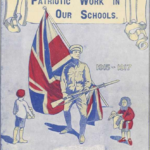

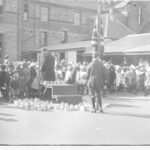
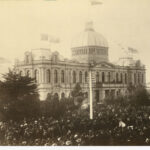
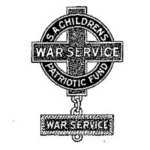
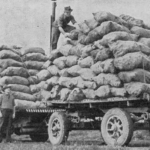
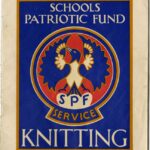

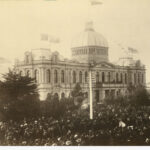
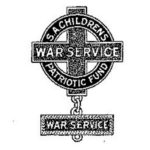
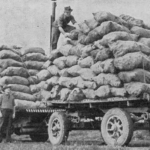
Comments
8 responses to “Schools’ Patriotic Fund”
An older friend remembers the Schools Patriotic Fund knitting book.
Do you know anything about this ?? thanks.
She had one, but has mislaid it.
If you look in the ‘Related’ menu to the right of the article above Merrilyn you’ll see a link to a Schools Patriotic Fund knitting booklet from our collections. Is this the one you are referring to?
My father remembers well contributing to the Schools Patriotic Fund when he was in primary school. In an oral history recording, he says:
“The idea was for kids to collect useful recyclable items that could aid the war effort, like metal – old saucepans were prized – newspaper, cartons and ‘silver paper’ that in those days was wrapped around cigarettes in their packets.
I had a small four-wheel pull cart that I used to collect from ours and surrounding streets, and then deliver to an empty room at the school that was set aside for temporary storage until full, and then it was taken some other central depot – no idea what happened to it then. Often wonder if it was more about lifting morale than actually doing anything very practical to help win the war.
Nevertheless, in grade 4, age 8, I was proud to be awarded first a specially inscribed pencil acknowledging my efforts, and then later to receive a very special award of a copy of a book entitled “My Friend Flicka” – about a boy and his horse – I had it in my possession until mid-80s, in ‘the trunk’ that held all our memorabilia. For all I know it might still be there. Very dog eared, but much treasured.
On the day that peace was declared I remember that all we kids got into the storage room and had a great time hurling the now redundant newspapers and stuff all over the place – with me feeling a bit let down that all my more recent efforts had been for nought. Natural, I guess.”
What amazing memories, thanks for sharing your father’s reflections Cate.
My father passed away recently and whe I was going through his belongings I came across a medal/badge it’s has SPF and then there are 6 individual service bars hanging off it. Is this from this fund would you know. Very interested in finding out if it’s from my parents or grand parents
My father who is 83 now can remember as a school boy searching all over the farm paddocks for sheep bones and wool to send off to the SPF. He lived on Yorke Peninsula .
That’s amazing Alison, I wonder what they used the bones for? I’ll have to do some more research.
I was wondering if there is any record of children who were awarded medals. Also, is there a list of medals (with images) and what children had to do in order to receive these medals? I received several medals myself but not sure in what order I received them or how you earned them.